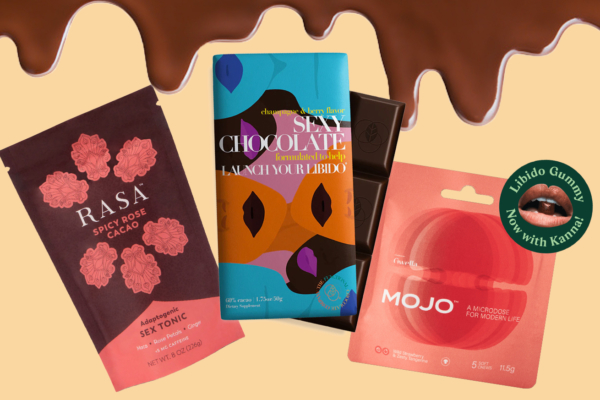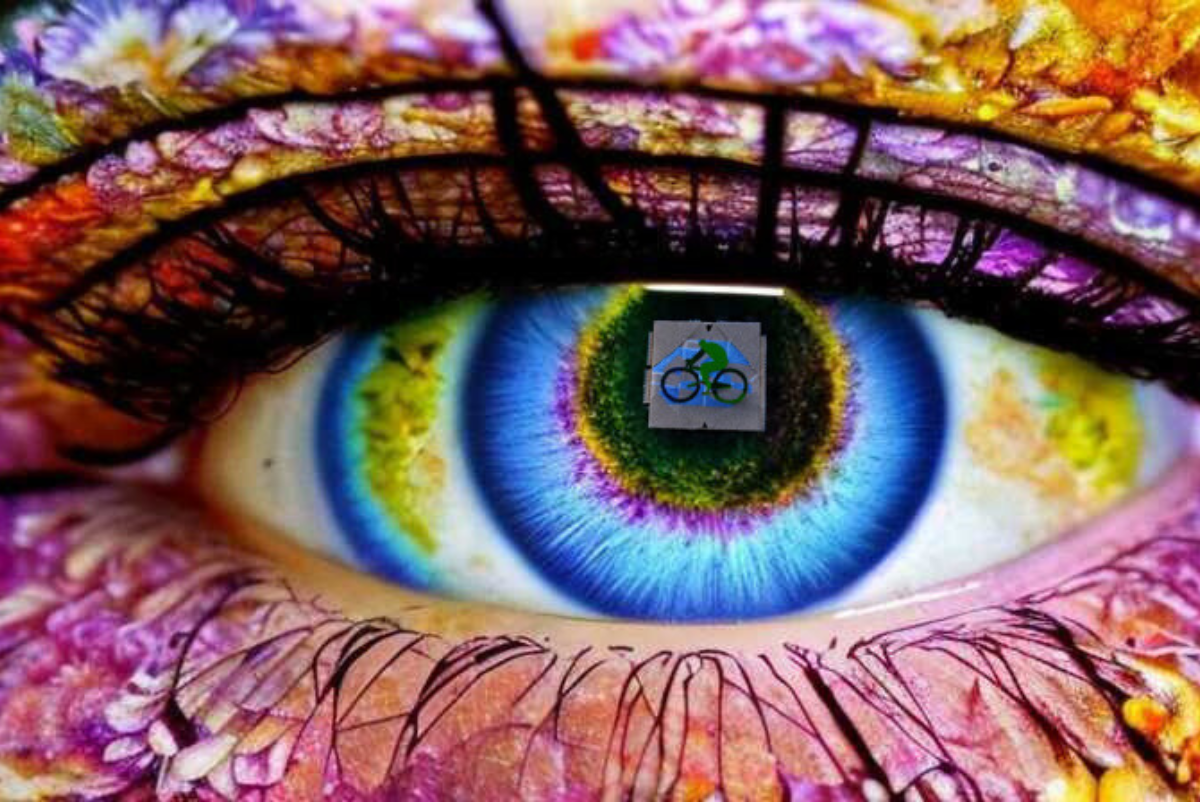
Microdosing has gained popularity in recent years as a method to enhance productivity, and boost creativity. While it is more popularly done with psilocybin shrooms, it is possible to do it with other substances, too. LSD has been a staple in microdose culture for years now. This practice involves taking sub-perceptual doses of LSD, typically one-tenth to one-twentieth of a standard recreational dose. Often, people use LSD microdosing to help boost their concentration or even to help them reignite or boost their creativity. In this article, we will explore the concept of microdosing, provide guidance on how to correctly start microdosing LSD, and give you an outline of LSD microdosing protocols.
Understanding Microdosing LSD:
Microdosing involves consuming small doses of LSD with the intention of reaping the potential benefits without experiencing the intense psychedelic effects associated with a full dose. The goal is to achieve a subtle shift in perception, increased focus, and heightened creativity.
It is important to note that microdosing LSD is not quite the same as microdosing psilocybin and should not be approached the same way without doing proper research beforehand. There is more prep work needed with LSD to ensure a safe microdosing journey, so it is imperative one is aware of this, and to not skip any steps in the process. Additionally, while LSD and shrooms enact upon the same receptor, they are slightly different in how their effects are perceived, even at a microdose level. It is best to get to know these two substances on both a micro and macro level to see how you an individual reacts to them. Some people prefer shrooms over LSD or vice versa — your substance of choice depends on what you feel meshes best with your own personality. If you aren’t sure where to begin, you can take our Microdosing for Creativity course where our facilitators can help you determine what substance is best for you.
Learn How to Microdose for Creativity
How to Start Microdosing LSD:
Obtain Reliable LSD and Test It:

This is the most important step to consider before consuming any dose of LSD. It is crucial to ensure the quality and purity of the LSD you acquire. It can be hard to find a good LSD plug, so if you are interested in procuring, ask your close circle first. A trusted friend may be able to guide you to a reliable plug. Even then, you must always test your LSD. Whether you get your LSD from a friend, a plug, or the online black market, always test your supply. Testing kits are cheap (usually <$30) and will last you a very long time. A popular and reliable place to get testing kits is from DanceSafe. Not sponsored — genuinely just want you to be safe.
The importance of testing your LSD cannot be overstated. Do not rely on blind trust when it comes to any drug. LSD blotters are commonly adulterated with 25I-NBOMe. This molecule is often easier and cheaper to manufacture than LSD, thus return on investment becomes higher for drug manufacturers and dealers in comparison to LSD. It is not uncommon to encounter a dealer who is unaware that their product is adulterated, as they have also been under the assumption that their product is legitimate.
The first sign that an LSD blotter is tainted is taste. LSD should not have a discernible taste at recreational doses. If your LSD has a metallic or bitter taste, spit it out. It should also not leave your tongue feeling numb, so if you feel any numbing sensation, spit it out.
While NBOMe elicits similar effects to LSD, it is highly toxic. While it is virtually impossible to overdose on LSD, it is not quite as difficult to do so on NBOMe. Some people may overdose in as little as double the average LSD dose. In addition, it comes with a long list of side effects that were observed in scientific studies. These include: anxiety, panic and fear, agitation, uncontrollable violent behavior, seizures, excited delirium, and sympathomimetic signs such mydriasis, tachycardia, hypertension, hyperthermia, and diaphoresis. Rhabdomyolysis, disseminated intravascular coagulation, hypoglycemia, metabolic acidosis, and multiorgan failure have also been reported. There have been reports of fatalities attributed to NBOMe, as well. While most deaths are due to the physical side effects, there have been reports of self-harm and suicide while under its influence. Side effects and fatalities caused by NBOMe have been erroneously attributed to LSD, so NBOMe has severely hurt the reputation of LSD and has unjustifiably stigmatized it. It is our part to test our product and prevent further misinformation about LSD.
You run a high risk of serious intoxication or death due to adulterated substances, so always test your LSD!
Volumetric Microdosing / Diluting:
Volumetric dosing is the process of dissolving a compound in a liquid to make it easier to measure. It is the only way to accurately measure dissolvable substances for microdosing, such as LSD, if the substance is laid on blotter paper or gel tab.
Unless you are near the vicinity of one of the gray market psychedelic dispensaries that have been popping up throughout North America, it is very likely that your LSD comes in blotters (tiny square pieces of paper) or gel tabs rather than vials.
Abstain from cutting your blotters or tabs into small microdose pieces. This is not a reliable way of properly measuring out a consistent dose. Plus, you will waste more product than you think, so do not rush the process – dilute your LSD.
It can be hard to know exactly how many µg a tab can contain, so ask whomever or wherever you bought your LSD from for an approximate dose. This is important to know. We have written out a guide on how to do this in the next section.
Find Your Optimal Dosage:
Start with a low dose, typically around 5 micrograms, and gradually increase on each dosing day. When you feel some slight effects, then decrease your dose by 1mL – that’s your optimal dose. You do not want to perceive any effects; it should be subperceptual.
Keep a Journal:
Maintain a microdosing journal to track your experiences, observations, and any notable changes in cognition, mood, or productivity. This will help you assess the effects and adjust your approach accordingly.
LSD Volumetric Dosing Guide:
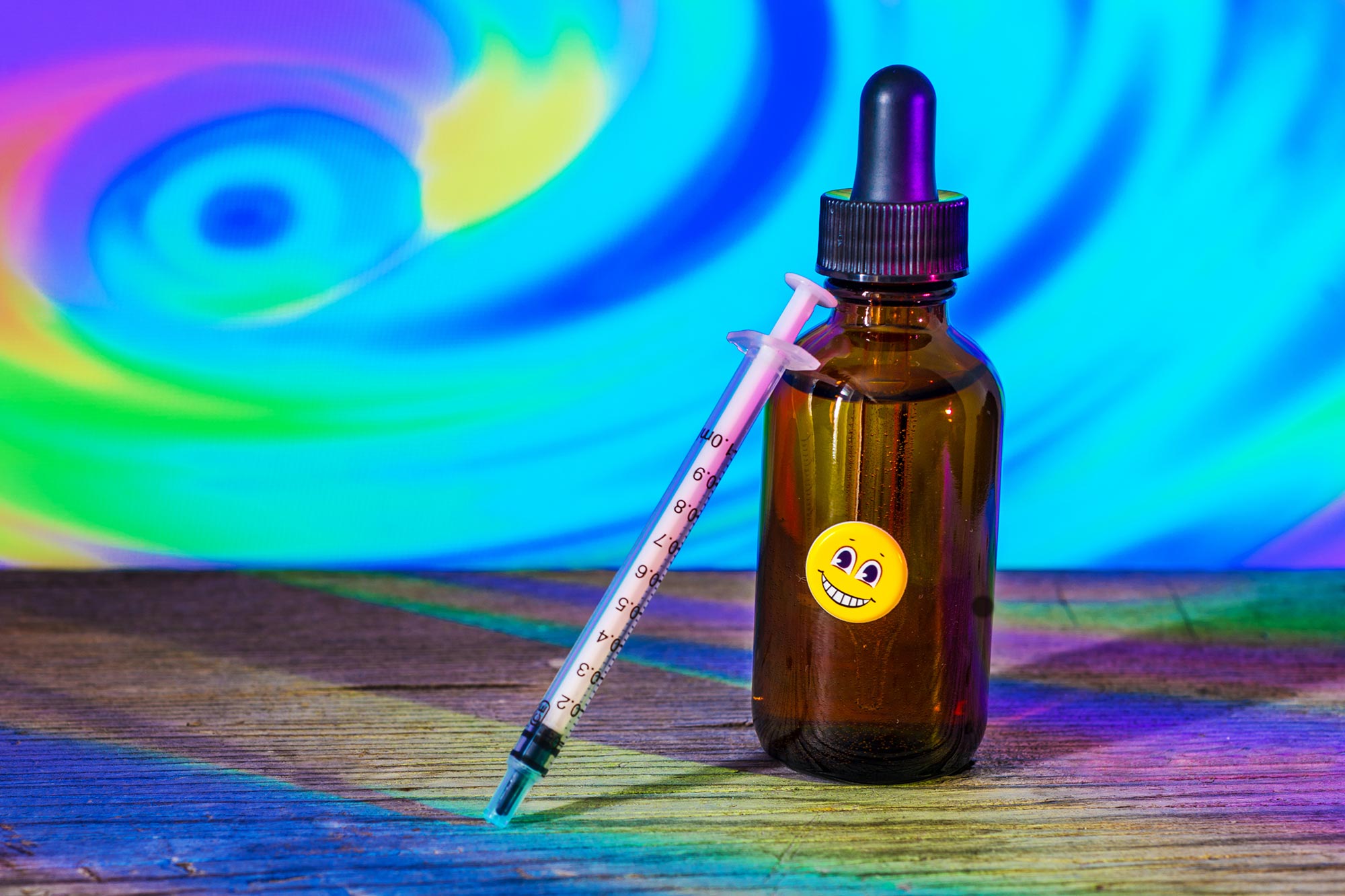
To properly microdose LSD, you need to conduct what is called volumetric dosing. This simply means you dissolve a tab in liquid to ensure the LSD is evenly distributed.
What you will need.
- An amber bottle with a 1mL dropper (do not use a clear bottle!)
- An accurate syringe or graduated cylinder
- Distilled water or vodka (do not use tap water!)
- An LSD tab
Step 1: Sterilize your amber bottle
It is important to use an amber bottle, as that will protect your LSD from UV rays that may cause it to degrade. If you absolutely have to use a clear bottle, then wrap it with aluminium foil to prevent degradation. Before starting, it is good practice to sterilize the glass bottle to prevent contamination from destroying the solution.
To sterilize the bottle, remove the rubber parts of the bottle then boil both the bottle and glass pipette for 10 minutes in water, then leave to dry on a clean towel. Make sure the surfaces you are working on are disinfected. Once the bottle is dry, place it in the oven for another 10 minutes at around 130°C/250°F and leave it to cool. You can skip the oven step and use 70%+ isopropyl alcohol to rinse the bottle instead.
Step 2: Measure out your solvent
Using the syringe or cylinder, measure out 20ml of distilled water, vodka, or a combination and fill the amber glass bottle. DO NOT use tap water, as the traces of chlorine can degrade the LSD and render it useless. Vodka will prevent bacterial growth.
Step 3: Add your LSD tab
Insert your LSD tab into the bottle and close tightly. Shake lightly and store in fridge to reduce degradation. Leave overnight to ensure solution is fully homogenized.
Step 4: Calculate Dose Distribution
After doing this, you will have a 20ml solution containing X amount of LSD, depending on the strength of your individual tab. To find out how much each microdose will be, use this formula:
(Dose of tab µg) / 20mL = X µg/mL
So, if your tab is 100µg, each mL of your solution will contain 5µg of LSD. You can alter the concentration to meet your dosing requirements by doing some quick elementary math and setting up a ratio.
(This volumetric dosing guide was adapted with the help of r/microdosing.)
A Look At LSD Microdosing Protocols:
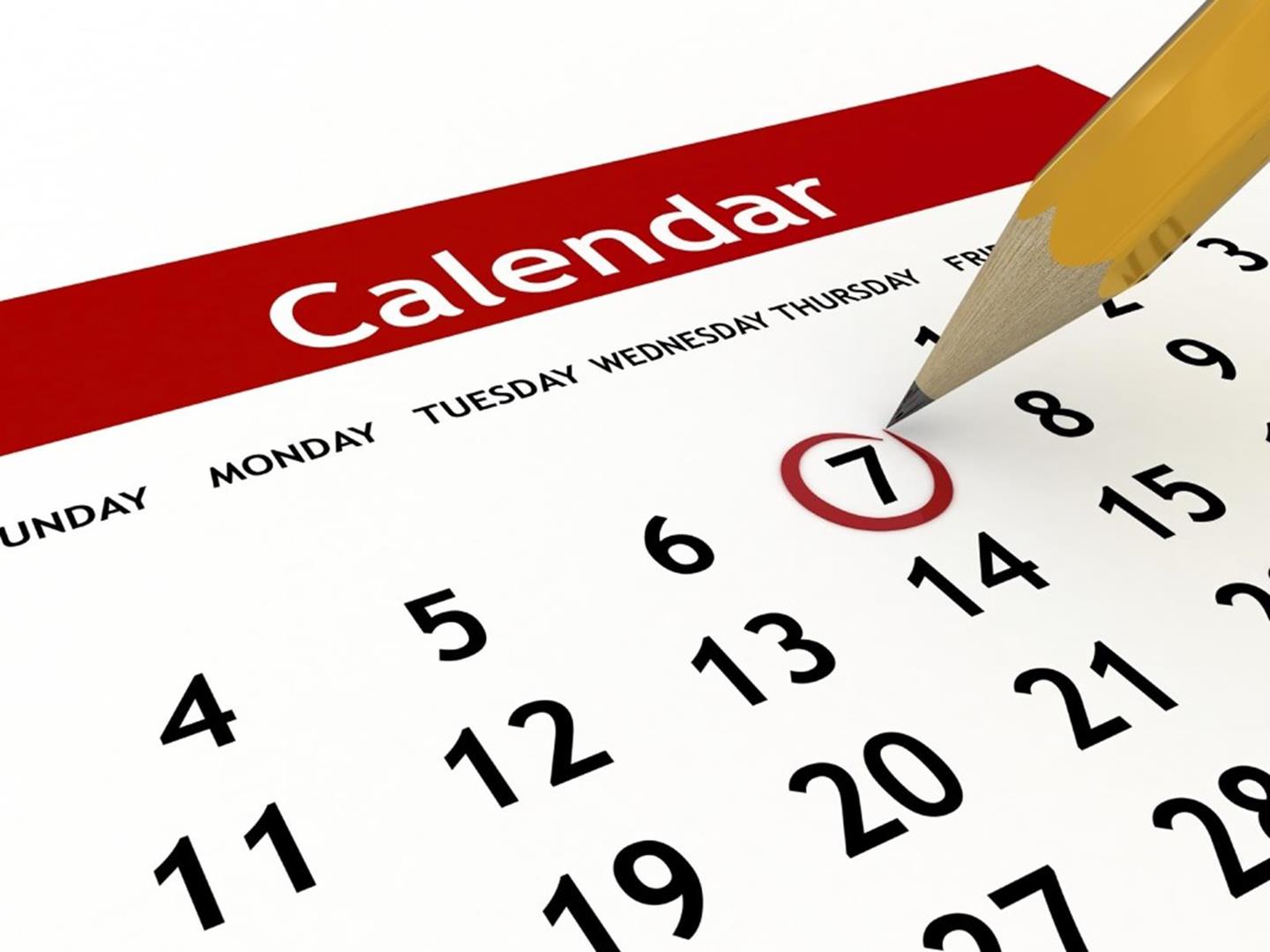
Microdosing protocols refer to the specific regimens and schedules followed when engaging in LSD microdosing. These protocols dictate the frequency, dosage, and duration of microdosing cycles and aim to maximize the potential benefits while minimizing the risks and adverse effects.
If you are familiar with psilocybin microdosing protocols, then this will be rather simple. There are a few protocols that do not carry over to LSD, such as Stamets (as it was made specifically for mushrooms) and a nightly protocol (since LSD can interrupt your sleeping schedule).
Besides that, microdosing protocols are 1:1 with LSD and psilocybin. Here is a recap of the most common microdosing protocols.
1. The Fadiman Protocol:
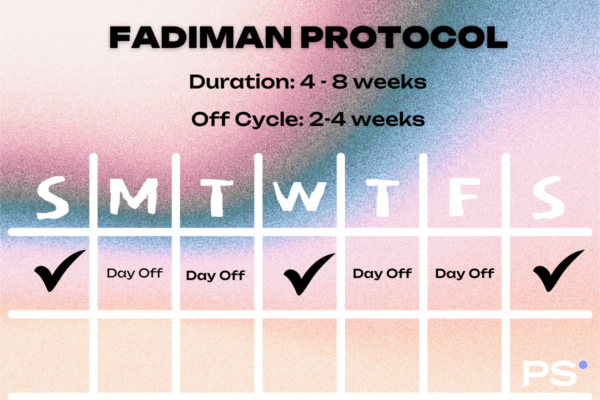
The Fadiman protocol is one of the most popular LSD microdosing protocols.
This protocol is named after Dr. James Fadiman, who created it to study the effects of microdosing by having microdosing days and non-microdosing days. In this protocol, you take a dose every third day and have two days of rest. Monitor your effects during the off days in a journal.
Instructions: take a microdose every 3 days.
- Day 1: Microdose
- Day 2: Rest
- Day 3: Rest
- Day 4: Microdose
2. Fixed Schedule Protocol:
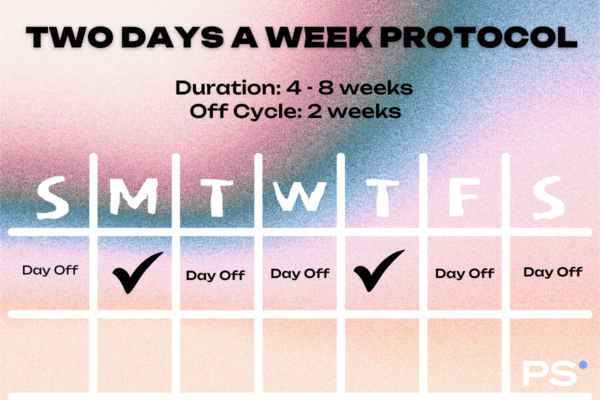
If you aren’t particularly good at remembering when to take medicine or supplements on a non-fixed schedule, it may be easier to choose specific days of the week to microdose. This can make it easier to incorporate into a routine. A fixed schedule can be one of the best LSD microdosing protocols for people who like routine.
Instructions: Choose specific fixed days to microdose during the week and rest for the rest.
- Fixed Day: Microdose (for example, Monday)
- Day 2: Rest
- Day 3: Rest
- Fixed Day: Microdose (for example, Thursday)
- Day 5-7: Rest
If is also possible to incorporate a third microdose during Day 6 and rest for one day, as this combines elements from the next protocol on this list.
3. Every Other Day Protocol
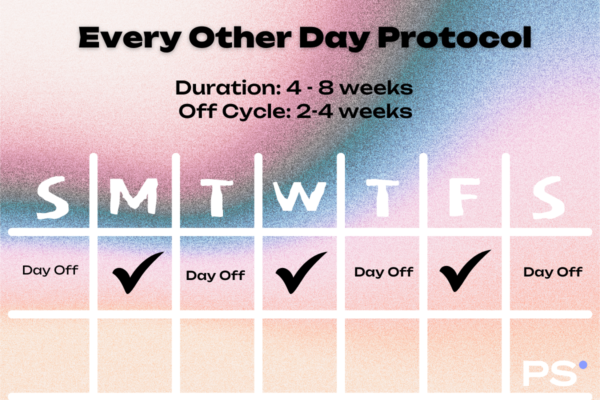
This protocol is incredibly easy to do and is very similar to the Fadiman Protocol. Instead of microdosing every 3 days, you will take a dose every other day. Continue this on-off cycle for 4-8 weeks. You have only one day of rest in between microdosing doses, so be attuned to what you feel on the microdose and keep a journal to track whatever changes in your mood, creativity, thoughts, memories, etc. occur.
Instructions: Take a dose every other day.
- Day 1: Microdose
- Day 2: Rest
- Day 3: Microdose
- Day 4: Rest
4. Intuitive Microdosing

Lastly, sometimes sticking to a set schedule can be difficult. If you realize after trying out any of these LSD microdosing protocols, that you cannot quite commit to the schedule, then you could think of switching over to an intuitive protocol.
Intuitive microdosing is a protocol that is defined by you and tailored to your specific needs. Under this protocol, you choose when you want to microdose by using your own intuition as a guide. After trying out a protocol, some people tend to switch over to a more intuitive protocol. You know yourself best, so you may know best when it’s a good time to microdose based on how you have been feeling.
If you are often forgetting your microdose, then your intuition may be telling you that you may not need it. On the other hand, if you are remembering and often reaching for it, then listen to that intuition.
The only rule in this is that you must leave one day in between doses to rest.
Factors to Consider when Choosing a Protocol:
- Desired Outcomes: Determine your primary goals for microdosing, such as creativity enhancement, increased focus, or mood stabilization. Different protocols may be more suitable for specific objectives. Always set an intention before microdosing. It will subconsciously guide your trip. There is power in intention.
- Personal Sensitivity: Each individual’s sensitivity to LSD varies. Start with a lower dosage and gradually adjust as needed, paying close attention to your body’s response and subjective experiences. Find your optimal dose.
- Lifestyle and Commitment: Consider your daily routine, responsibilities, and lifestyle when choosing a protocol. Some protocols may be more compatible with certain lifestyles, while others require a higher level of commitment.
- Integration and Reflection: Reflect on the importance of integrating microdosing experiences into your life. Some protocols emphasize incorporating off-days for introspection and integration, allowing for deeper self-reflection and integration of insights.
- Monitoring and Adapting: Throughout your microdosing journey, it is crucial to keep track of your experiences and observe any changes in mood, cognition, or productivity. Maintain a microdosing journal to record dosages, schedules, and subjective effects. Regularly assess the outcomes and be open to adapting the protocol if necessary to optimize your experience.
Closing Remarks
Microdosing LSD can be a great thing to add to your routine. While it requires a little bit of prep work, it is a very easy way to microdose once everything is set up. LSD microdosing protocols can provide a structured framework for exploring the potential benefits of microdosing while minimizing potential risks. Choose a protocol that aligns with your lifestyle and goals, and modify it to meet your needs.

